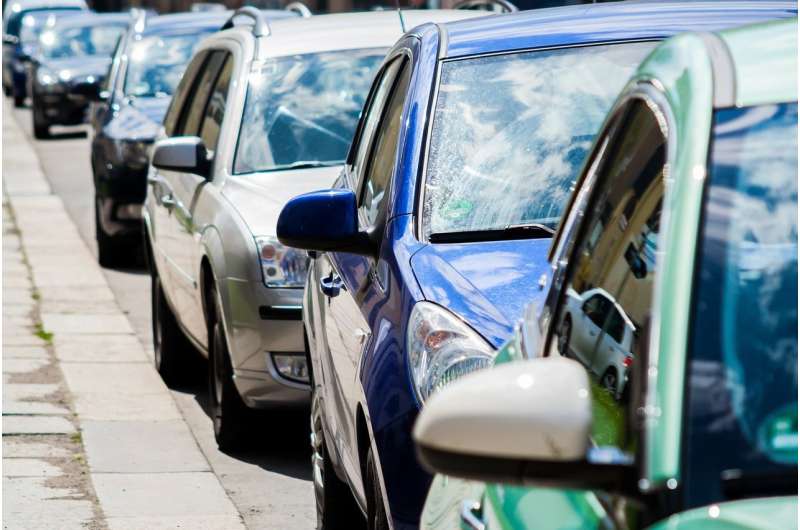This article has been reviewed according to Science X's editorial process and policies. Editors have highlighted the following attributes while ensuring the content's credibility:
fact-checked
reputable news agency
proofread
It took 50 years but Colorado finally met federal standards to lower carbon monoxide pollution

Five Colorado cities hit a benchmark for reducing carbon monoxide in the air and now Colorado will ask the Environmental Protection Agency to release it from federal oversight for monitoring those emissions.
It would be the first time in nearly 50 years that Colorado would not be under federal oversight for carbon monoxide emissions that largely were caused by heavy rush hour traffic and cars made without catalytic converters. On Thursday, the Colorado Air Quality Control Commission voted to remove federal oversight and repeal monitoring requirements. The Environmental Protection Agency must approve the plan.
"Colorado experienced high levels of carbon monoxide pollution in the 1970s and 1980s, and this milestone shows how far we've come in protecting and improving air quality for all Coloradans," commission chairman Patrick Cummins said.
In the 1970s, Colorado Springs, Denver, Greeley, Longmont and Fort Collins were plagued by high carbon monoxide emissions, mostly from automobile exhaust. Throughout the decade, the region exceeded federal standards for carbon monoxide more than 100 times with most of those violations happening during daily rush hours.
Those cities were placed under Environmental Protection Agency oversight to reduce carbon monoxide, an odorless, tasteless gas that can cause headaches, dizziness, nausea and chest pain, and can exacerbate pre-existing conditions such as heart diseases.
Colorado was able to reduce carbon monoxide in the air as more automakers installed catalytic converters in cars and trucks and by using gasoline that burned cleaner. The state also started requiring auto emissions inspections.
In 1999, the state hit the federal standard for carbon monoxide emissions but it was required to stay in compliance for 20 years. It is now 80% lower than the federal standard and has stayed that way, allowing the federal oversight to be relaxed.
But that doesn't mean the Denver Metro area and northern Front Range are in the clear. Nor will it stop finding ways to reduce carbon monoxide pollution, which also is created by oil and gas production.
The region is still considered in severe violation of National Ambient Air Quality standards for ground-level ozone pollution and measures continue to be in place to reduce nitrogen oxides and volatile organic compounds—the two ingredients that form smog on hot summer days.
Still, commissioners found the success in reducing carbon monoxide encouraging.
"Hopefully, it will inspire us to tackle the outstanding challenges that we have," Commissioner Elise Jones said. "We can see that it is possible to achieve them."
2024 MediaNews Group, Inc. Distributed by Tribune Content Agency, LLC.



















